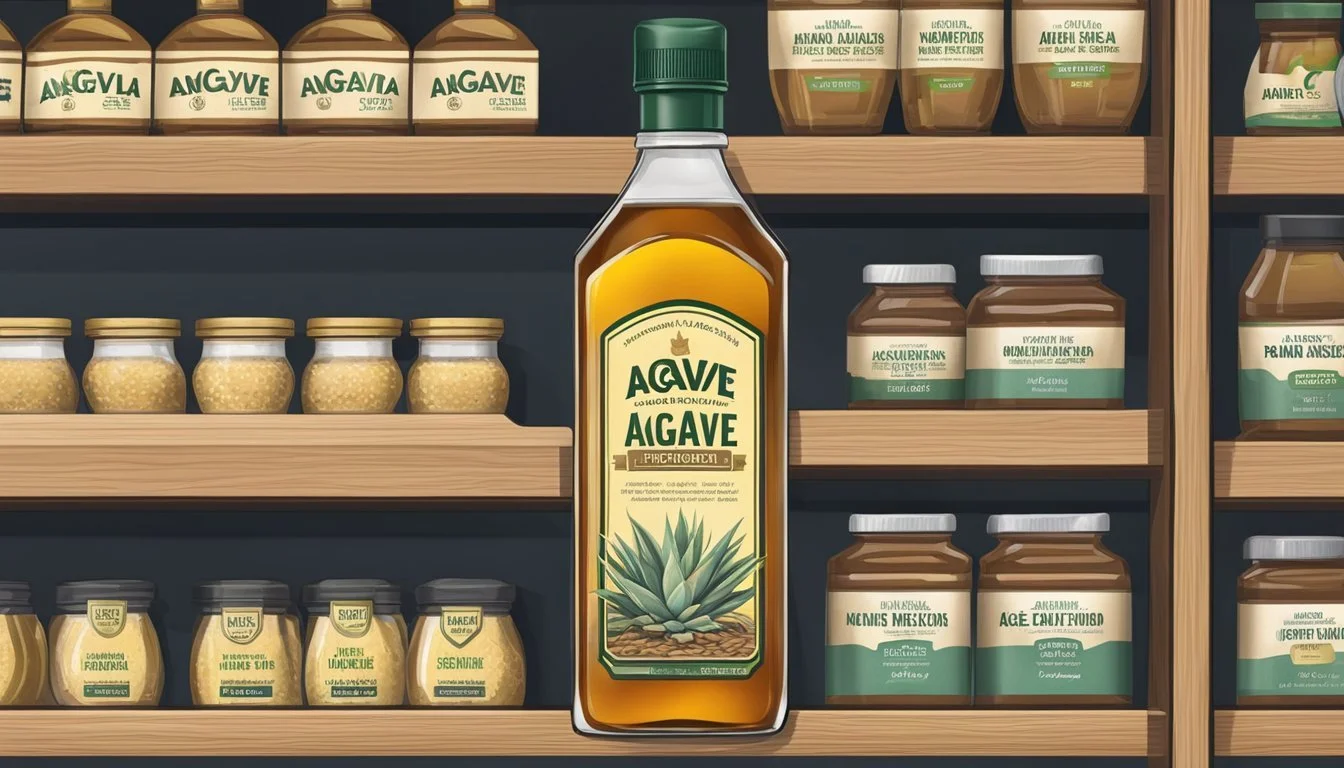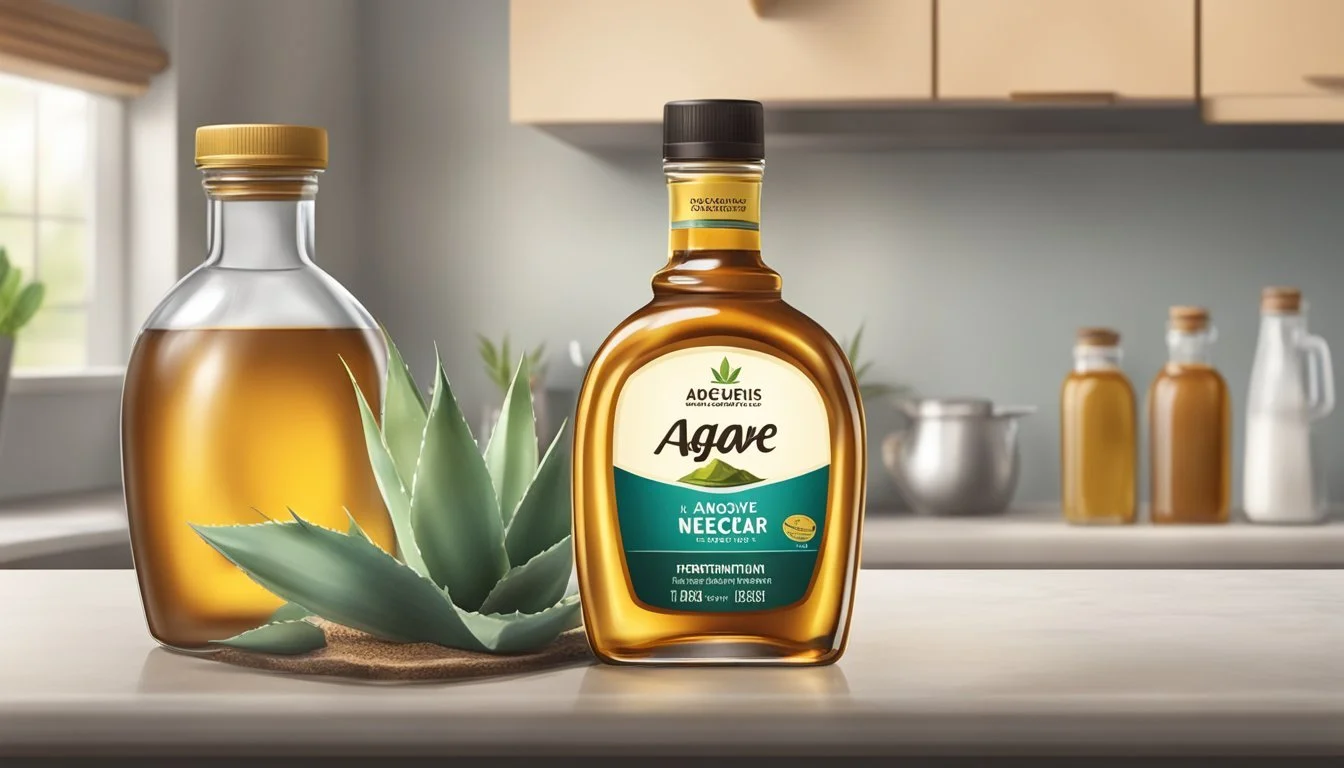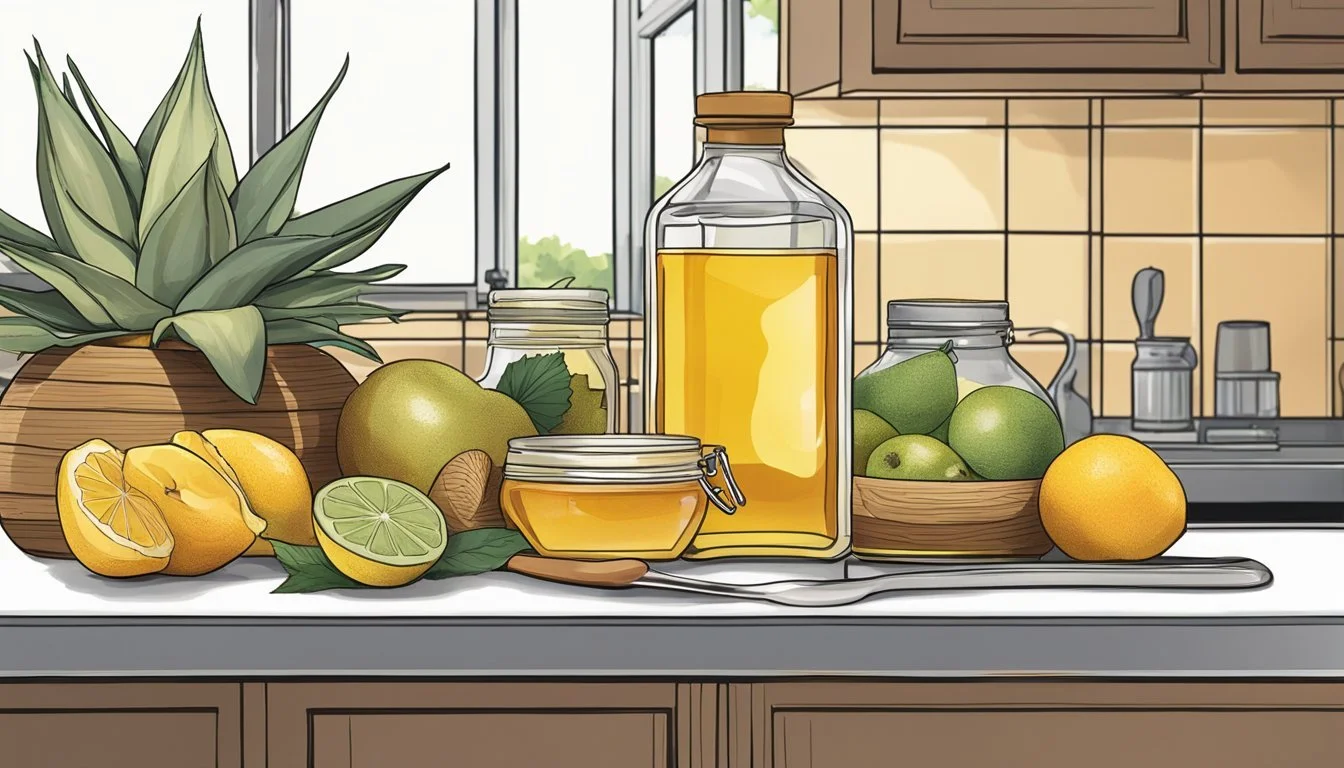Does Agave Nectar Go Bad?
Shelf Life and Storage Tips
Agave nectar, a popular natural sweetener derived from the agave plant, is often favored as a substitute for sugar and other artificial sweeteners. Many wonder whether this sweet liquid can go bad and, if so, how to tell. Yes, agave nectar can go bad, especially if not stored properly.
Agave nectar typically boasts a shelf life of around 2 years when kept in a cool, dry place. Signs of spoilage may include changes in color, consistency, or smell, and it's best to discard the nectar if these are noticed. While some claim that agave nectar can last indefinitely, its quality and flavor start to degrade after about 3 to 5 years, reducing its appeal.
For those using agave nectar in their diet, proper storage is key to maintaining its quality. By ensuring the bottle is sealed tightly and stored away from moisture and contaminants, you can enjoy agave nectar's full flavor for longer. This makes it a viable option for sweetening foods and beverages compared to other sweeteners like honey or sugar.
Understanding Agave Nectar
Agave nectar is a popular natural sweetener, praised for its low glycemic index and unique properties. It originates from the agave plant, primarily grown in Mexico, and offers various health benefits due to its nutrient content.
Source and Production
Agave nectar is derived from the agave plant, a succulent found primarily in Mexico. The process begins with the cultivation and harvesting of mature agave plants, typically after they have reached seven to ten years of age.
After harvesting, the leaves are cut away to reveal the core, or piña, which is then pressed to extract the juice. This juice undergoes filtration to remove impurities and is then heated to break down the fructans into fructose, resulting in a sweet, syrupy nectar. This method ensures that the agave nectar retains its natural sweetness and characteristic flavor, making it a preferred sweetener in various culinary applications.
Nutritional Profile
Agave nectar is known for its low glycemic index which makes it a favorable alternative to traditional sugars. It primarily consists of fructose, contributing to its sweet flavor. Besides being a reliable sweetener, agave nectar contains small amounts of vitamins and minerals.
Although the quantities are relatively modest, these include iron, calcium, and potassium. The nectar also has beneficial antioxidants that help combat oxidative stress in the body. Due to its composition, agave nectar serves as a healthier option for those seeking to manage their carbohydrate intake while still enjoying a sweetener.
Benefits of Agave Nectar
Agave nectar offers several health benefits, including maintaining stable blood sugar levels due to its low glycemic index and serving as a versatile vegan and plant-based alternative in various culinary applications.
Low Glycemic Index
Agave nectar is known for its low glycemic index (GI), making it a suitable sweetener for those who need to monitor their blood sugar levels carefully. Foods with a low GI are absorbed more slowly, preventing rapid spikes in blood sugar.
This characteristic is particularly beneficial for people with diabetes who need to control their blood sugar levels. Because agave nectar is metabolized more slowly, it produces a more gradual increase in blood sugar compared to high-GI sweeteners like refined sugar and high-fructose corn syrup.
Vegan and Plant-Based Alternatives
Agave nectar is a popular choice among vegans and those following a plant-based diet. Derived from the agave plant, it is a natural sweetener that doesn’t involve animal products or by-products.
Many traditional sweeteners, like honey, are not considered vegan since they are produced by bees. Agave nectar provides a cruelty-free alternative. Additionally, it doesn’t contain common artificial additives or preservatives, preserving its natural essence.
This makes it an attractive option for those seeking to maintain a vegan lifestyle while enjoying sweet culinary delights.
Culinary Uses
In the kitchen, agave nectar is highly versatile. Its consistent texture and mild flavor make it an excellent substitute for sugar in various recipes, particularly in baking and cooking.
Because it is sweeter than sugar, less quantity is needed, which can alter the flavor and texture of dishes positively. It's often used in smoothies, dressings, marinades, and as a topping for pancakes and waffles. Due to its liquid form, it mixes well with both hot and cold beverages, enhancing drinks like tea and coffee.
Agave nectar’s adaptability extends beyond just being a simple sweetener, offering unique functional benefits in a wide array of culinary applications.
Storage Guidelines
To maintain the quality and extend the shelf life of agave nectar, proper storage is essential. Proper storage conditions can prevent spoilage and ensure its sweetness and flavor remain intact.
Ideal Storage Conditions
Agave nectar should be stored in a cool, dry place away from direct sunlight. An airtight container is recommended to protect it from moisture and contaminants.
Room temperature conditions are generally suitable for most types of agave nectar. Temperatures around 65-75°F (18-24°C) are considered ideal.
Storing it in a pantry or cupboard, where it is shielded from excessive heat and light, helps in preserving its quality. Always ensure the container is properly sealed after use to avoid exposure to air and potential contamination.
Refrigeration vs. Pantry
Agave nectar does not require refrigeration. In fact, storing it in the refrigerator can cause it to thicken and become difficult to pour.
Keeping the nectar in the pantry at room temperature is perfectly adequate. It simplifies usage without compromising its quality.
However, if you live in an exceptionally hot climate, refrigeration may help prevent spoilage. Ensure the container is well-sealed to maintain optimal texture and flavor.
Identifying Spoilage
Agave nectar, although known for its long shelf life, can spoil if stored improperly or exposed to contaminants. Recognizing the signs of spoilage and understanding the potential health risks are essential for safe consumption.
Signs of Spoilage
Several indicators can help determine if agave nectar has gone bad. Smell is often the first noticeable sign; a sour or unusual odor means the nectar might be spoiled. Color changes, such as darkening or appearing cloudy, can also suggest deteriorating quality.
Texture is another clue. Agave nectar should have a smooth consistency. If it becomes thicker or unusually runny, it might be compromised. Mold presence, either on the surface or around the bottle's cap, is a definite sign to discard the nectar.
Frequent exposure to moisture or contaminants can further accelerate spoilage, making it crucial to store the nectar properly in a cool, dry place with its cap tightly sealed.
Health and Safety
Using spoiled agave nectar can pose various health risks. Bacterial growth is a primary concern, as spoiled nectar can harbor harmful bacteria. Consuming contaminated agave nectar might lead to foodborne illnesses, which can manifest as stomach cramps, nausea, vomiting, or diarrhea.
Food safety practices are vital. Always check the nectar for spoilage signs before use. Even if the nectar has passed its expiration date, it's worth checking for any spoilage indicators. If uncertain, it's safer to discard the nectar to avoid potential health risks.
Maximizing Shelf Life
To ensure that agave nectar lasts as long as possible, consider proper sealing techniques and the effects of freezing. These strategies can help maintain both the quality and longevity of the sweetener.
Proper Sealing Techniques
Air and moisture are the main culprits that can shorten the shelf life of agave nectar. Proper sealing techniques are essential to limit exposure.
Always store agave nectar in tightly sealed containers. This minimizes air contact and prevents moisture from entering. Containers with airtight lids are preferable. Glass jars with twist-on lids, or food-grade plastic containers with secure seals, work well.
Ensure that the container is clean and dry before transferring agave nectar into it. Wipe the rims of the container before sealing. Store the container in a cool, dark place to avoid exposure to light and heat, which can degrade the nectar faster.
Effects of Freezing
Freezing agave nectar can extend its shelf life, but it also comes with some considerations. Freezing transforms its consistency, making it thicker and more viscous upon thawing.
When properly stored, agave nectar can be kept in the freezer for an extended period. Use freezer-safe containers and leave some space at the top to allow for expansion.
Once removed from the freezer, thaw slowly in the refrigerator. Rapid temperature changes can alter its texture and flavor. While freezing helps prolong shelf life, it’s best for those planning to store agave nectar for long-term use.
Consistent freezing and thawing cycles are not recommended, as these can impact the quality. Therefore, portioning the nectar into smaller containers for single uses can be a practical solution.
Agave Nectar in Diet
Agave nectar is used for its low glycemic index and high fructose content. This section examines how these attributes impact health and how agave compares to other sweeteners.
Health Implications
Agave nectar's main benefit is its low glycemic index. It causes slower increases in blood sugar levels, making it a popular choice for those managing diabetes. However, the high fructose content can be harmful when consumed in large amounts.
Processed by the liver, excess fructose may contribute to fat buildup and liver issues. This sweetener is also low in glucose, further lowering its glycemic impact. Consumers should weigh these factors when considering agave as a regular part of their diet.
Comparable Sweeteners
When comparing agave nectar to other sweeteners like honey or maple syrup, it's important to consider their attributes. Honey has about 50% fructose and a moderate glycemic index, making it a natural alternative with health benefits like antioxidants. Maple syrup contains fewer calories and lower fructose levels than agave.
Table: Comparison of Sweeteners
Sweetener Fructose Content Glycemic Index Agave Nectar 70-90% Low Honey ~50% Moderate Maple Syrup ~35% Moderate
This table highlights the key differences in fructose content and glycemic index among popular natural sweeteners. Adjusting sweetener choices can optimize dietary benefits and minimize harmful effects.
Product Lifespan
Agave nectar, known for its long shelf life, can maintain its quality and freshness for an extended period if stored properly. Key factors include paying attention to expiration dates and recognizing quality indicators.
Expiration Date
Agave nectar typically comes with either a "best by" or "use by" date printed on the packaging. This date indicates the peak period for quality and nutritional value.
Even if it passes this date, agave nectar may still be safe for consumption.
However, beyond this time frame, its flavor, consistency, and effectiveness might decline. Storing the nectar in a cool, dry place away from direct sunlight can extend its shelf life. Refrigeration is unnecessary, and properly sealed containers can help maintain its longevity.
Quality Indicators
Several indicators can help determine if agave nectar has gone bad. The appearance is a primary factor; the nectar should remain clear without discoloration or cloudiness.
Changes in color, such as darkening, could signal spoilage. Consistency is another aspect; agave nectar should maintain a syrupy texture. If crystallization occurs, warming the nectar slightly can often restore its smoothness.
Unpleasant odors or a sour taste can also indicate spoilage, suggesting it is time to discard the product. Regularly checking these indicators ensures proper quality and extends the product's usability.
Common Questions
Proper storage, signs of spoilage, and usage tips are crucial for maintaining the quality and flavor of agave nectar. This section addresses these topics in detail, helping you make the most of your agave nectar.
How to Store
Agave nectar should be stored in a cool, dry place to preserve its quality. Heat and direct sunlight can degrade the nectar, altering its taste and consistency. A pantry or cupboard away from heat sources is ideal.
When storing agave nectar, ensure the cap is tightly sealed to prevent contaminants and moisture from entering. An airtight container can also help preserve its purity. For those who buy in bulk, dividing the nectar into smaller containers can help maintain freshness.
When to Discard
Like many other sweeteners, agave nectar can spoil if not stored properly. Indicators of spoilage include changes in color, consistency, or the appearance of crystals. A foul odor or signs of fermentation are strong indicators that the nectar has gone bad.
Expired agave nectar that still shows no visible signs of spoilage is generally safe to consume, although its taste and quality may be compromised. If in doubt, it's best to discard any expired agave nectar or nectar that seems off.
Usage Tips
Agave nectar is versatile and can be used in various culinary applications. Its usage ranges from sweetening beverages to being an ingredient in baked goods. Light agave nectar has a mild flavor suitable for drinks, while darker varieties have a robust taste that complements baked dishes.
When substituting agave nectar for other sweeteners, adjustments may be necessary due to its sweetness and liquid consistency. Experimentation can help find the right balance, ensuring that dishes retain their desired flavor and texture.
By following these storage, usage, and spoilage tips, you can maximize the shelf life and enjoyment of your agave nectar.







